‘A new era’: Truth behind Apple’s controversial new Vision Pro goggles
It was roasted as “ugly” and expensive as soon as it was unveiled, but there’s more to Apple’s wild new product than meets the eye, says Elly Awesome.
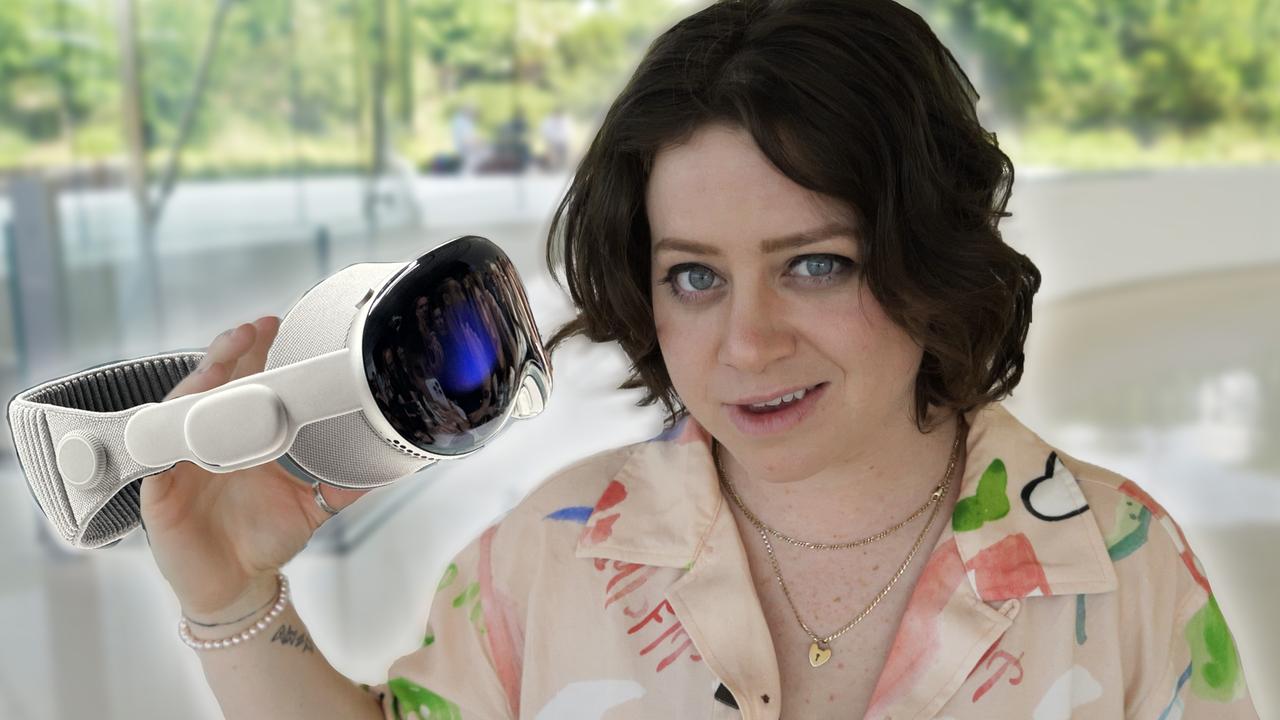
REVIEW
This week, Apple announced a groundbreaking product – and I got to be one of the first in the world to test it out.
The Vision Pro was one of the many products launched at the annual Worldwide Developers Conference (WWDC).
Most people will label this an obscure virtual reality headset, but it’s also somewhat of a wearable computer that reminds me of Iron Man’s heads-up display technology found inside Tony Stark’s helmet.
But what this really might be is a product that paves the way for the next generation of computing.
Although virtual and augmented reality technology is not all that new, Apple deciding to enter the virtual reality space, with its own hardware and software, makes this a historical product announcement.
And I believe that the Vision Pro could radically influence and change the way we interact with our computing technology, friends, family and our work moving forward.
I’m not just quoting the marketing blurbs here – it’s an opinion based on trying the Vision Pro for myself.
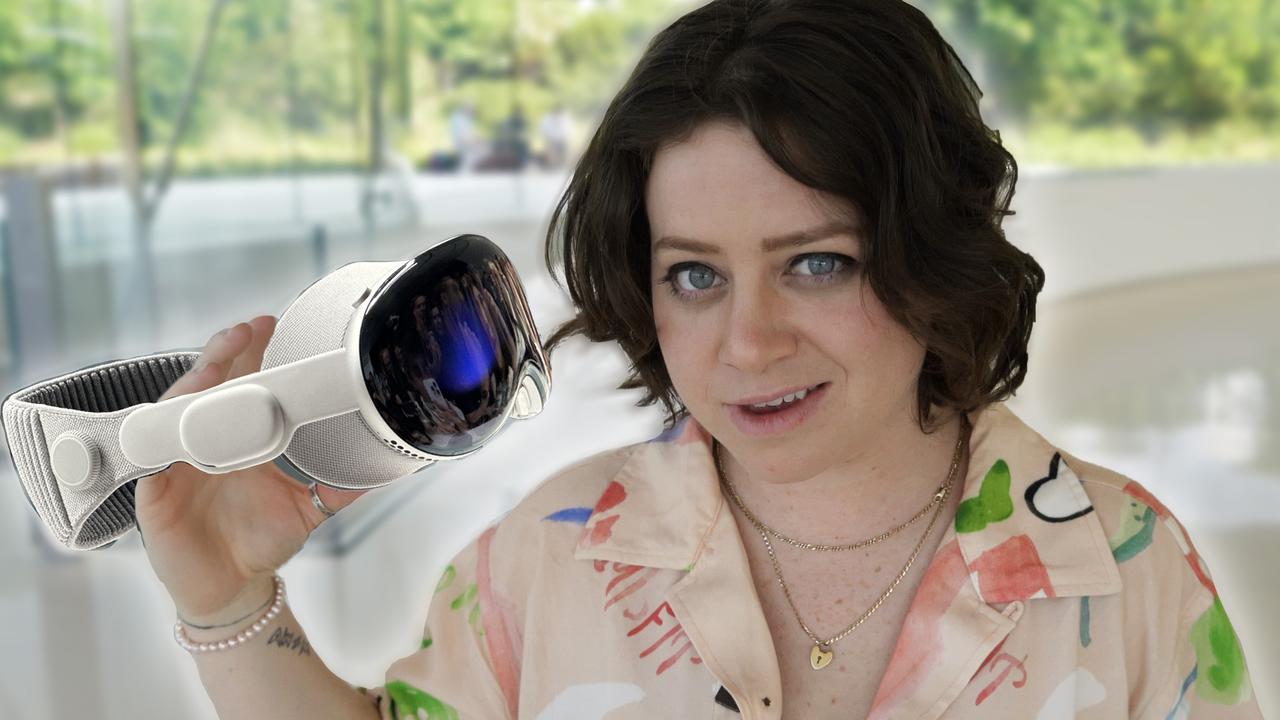
What is it?
Apple calls the Vision Pro a “spatial computer” – and for good reason – but to keep things simple, I’m going to refer to it as a virtual reality headset.
It is essentially a mixed reality headset – it features virtual and augmented reality components, which also happens to overlap with the definition of spatial computing – essentially, the ability to interact with computing technology and digital content within your physical space.
And that’s exactly what I got to experience.
Set-up and comfort
I sat down on a couch in a living room set-up and put on the headset.
It was quick and easy to adjust, with a dial to tighten the fit around the back of my head and an over-the-head strap.
The headset, although a bit heavy, felt comfortable and sealed well around my nose and cheeks.
In this demo, it was attached to the Vision Pro’s optional external battery, which sat beside me.
And the Vision Pro is said to last around two hours with the external battery connected, or it can be used all day when it’s plugged in.
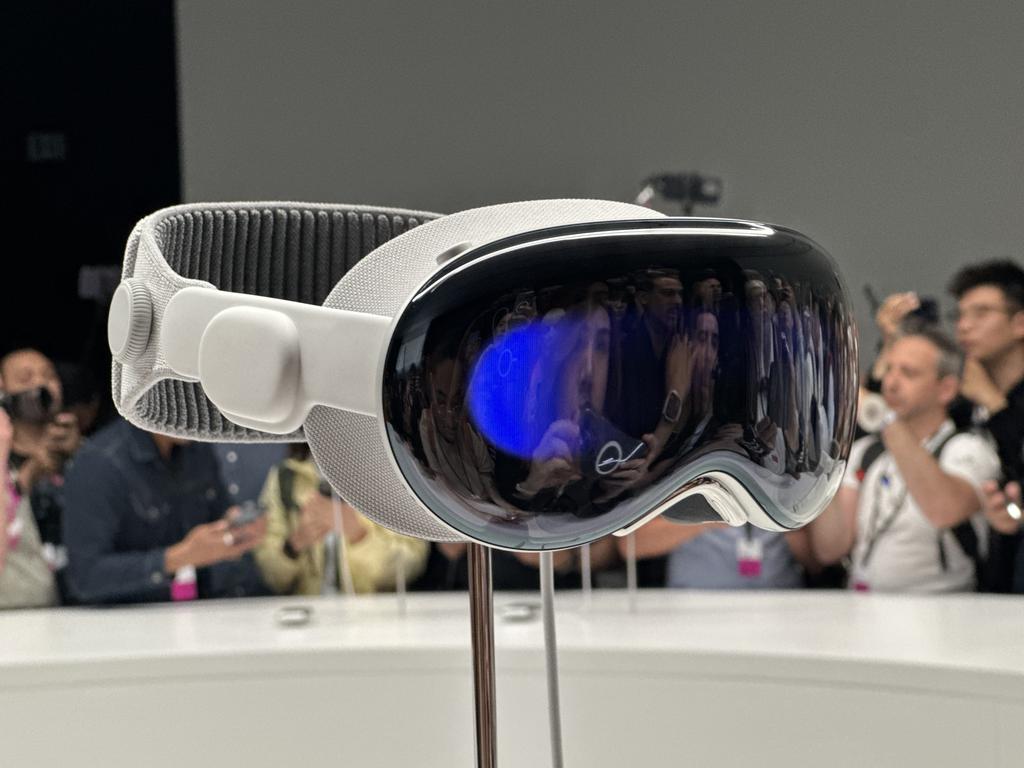
The experience
The first thing I saw through the headset was simply the room I was in.
Essentially, these closed-in goggles were acting as if they were transparent and I had a clear view of everything and everyone around me.
Although I didn’t feel as though I was looking through a pane of clear glass, the colours, movement and resolution of the room felt very true to life.
So when familiar iPhone and Mac apps appeared in the living room, floating in space in front of me, and I was able to interact with them with hand gestures, I felt immediately transported into a science-fiction future.
Eye tracking and apps
The headset has eye tracking, so when I looked around at the apps in front of me, they would highlight based on which one my gaze landed on. Then I was able to pinch my thumb and pointer finger together to select said app and open it.
I first opened up the Photos app and then used a pinch and pinch-and-drag gestures (in mid air) to view different images. It was insanely intuitive and even though I was just flicking through a photo album, I already felt just like Tom Cruise in the movie Minority Report. Viewing photos and videos on virtual reality headsets is old news, but the hand gesture controls felt revolutionary. Especially because I didn’t have to hold my hands up in front of my face for the gestures to work, which is often necessary with other headsets.
If you wanted, you could essentially rest your hands by your sides while performing gestures, out of your peripheral vision, and they would still work.
Meditation
Next, I experienced a guided meditation, where I took long and slow breaths mindfully while a voice and visual flower-like 3D graphic helped me stay relaxed and focused as it blossomed with beautiful petals that floated around me.
It was similar to the Mindfulness app on Apple Watch, but worlds better because it was in 3D space.
Similar apps do exist on other headsets, but this is one of my favourite concepts in VR and Apple has done it really well, so I was happy to see it included.
This is a revolutionary way to de-stress with success.
360-degree digital landscapes
After meditating I tested a “digital landscape”, and using the digital crown dial on the headset, I was able to expand a photorealistic landscape image until it completely took over my living room, transporting me to a new world.
This 360-degree landscape experience is certainly not new to virtual reality headsets, but what made this experience so breathtaking is that the headset was sealed so well on my face that there was no light leaking through the headset to ruin the illusion, and the headset’s field of view felt at least 180 degrees.
This means there was no letterboxing effect, as in, it didn’t feel like I was looking through binoculars.
It was all-encompassing, making it feel like I was really transported to a different place.
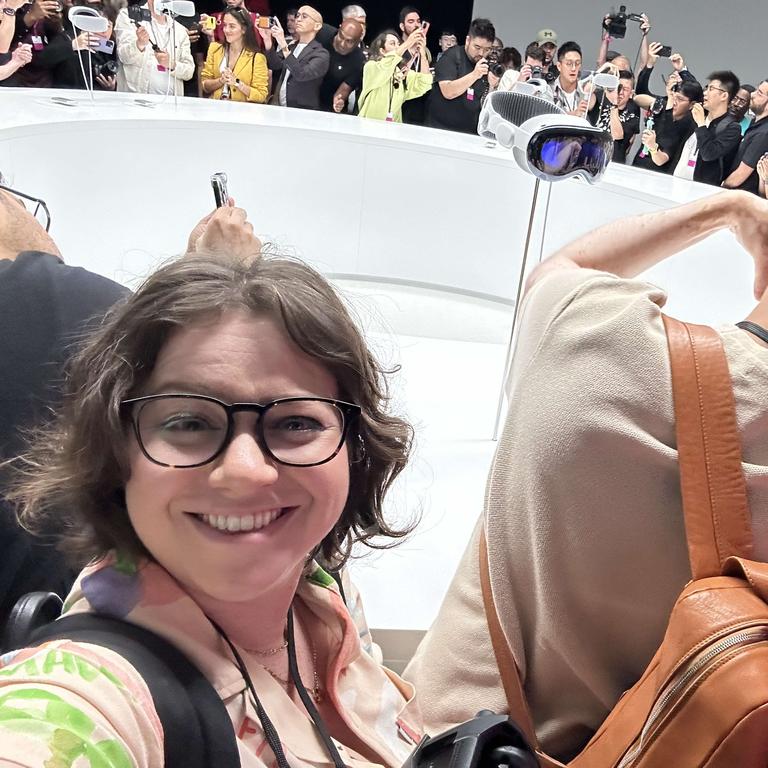
3D images, videos, concerts and sporting events
The icing on the cake came when I experienced 3D images, videos and live sporting events. The Vision Pro has the ability to capture and display 3D-style images and videos. I’d describe them as similar to those old lenticular or holographic pogs or posters that made a flat image jump out at you when you moved it from side to side.
When I looked at these visuals and tilted my head from left to right, the images and videos came to life. So much so that they turned from regular images and videos into what felt like people being in the room with me.
Next, I even got to watch a recording of Alicia Keys performing right in front of me. The 3D effect was also applied in this case and she was so close to me that I actually got starstruck. I mean, what would you do if a famous musician appeared in the room with you and started performing, while looking straight into your eyes?
This got even more insane when I was placed right behind the hoop at an NBA game and behind the goal of a football match. The ball appeared spherical, not 2D, and the players had depth and physicality.
I’ve watched plenty of content in VR but I have never experienced “the 3D effect”. It’s not that Apple is the first to do this, but I like that in this case, it was built into an Apple product. Meaning, I could transition from my everyday computing and app use (that I’d do on my iPhone or Mac) to then relaxing in front-row seats of, potentially, any live event.
And this is what caused my mind to be blown.
I suddenly forgot how goofy I might look wearing these ski-like goggles with my eyeballs showing through the front of the headset. I felt genuinely emotional as I experienced a close encounter with famous musicians and talented sporting legends, in a way which truly felt real. It felt like experiencing the iPhone for the first time, coming from the likes of a Nokia 3310. As a tech reviewer, in my mind, I finally experienced spatial computing that I feel could actually catch on. I mean, VR headsets have been around for a while now, but this is what made me see Ready Player One science fiction-type technology becoming a genuine everyday reality.
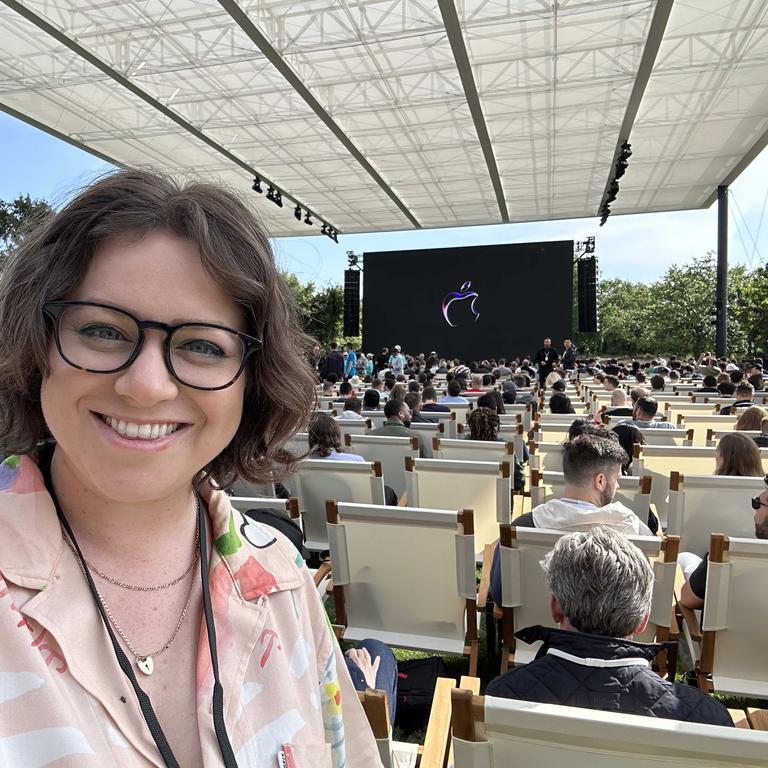
It’s heavy
Unfortunately, as much as I was wowed, this product isn’t without its faults.
During my demo experience I did feel quite a bit of pressure across my forehead. I spoke to others who tested the headset and they didn’t experience this as much, but we agreed the headset is quite heavy.
It’s clearly thoughtfully made with premium materials, and Apple avoided the typical plastic VR headset design and seemed to take inspiration from their AirPods Max.
However, I’d almost rather it looked cheaper and was made of plastic as it definitely needs work when it comes to its weight.
I wanted to stay in Vision Pro’s reality all day, but it would unfortunately be too uncomfortable for me at this stage.
Price
And, of course, the elephant in the room is its price point. As Apple is set to release this product at a whopping $US3499 in early 2024, it’s fair that we’ve seen a lot of scepticism around this product.
However, I think a lot of people, having not yet experienced this product, are missing something here.
I believe we’re seeing such a high price point because we are witnessing a historical technology release. If you look at the cost of the first mobile phone, it was around $4000, which values at around $11,000 in today’s pricing.
I don’t think the Vision Pro has been made with the expectation that everyone will purchase one on launch day.
However, I will buy one a couple of generations down the line. And I think this is the beginning of a new era of computing where, yes, one day (at least some of the time) we will actually wear our computers on our faces.
Elly Awesome is an Aussie tech and lifestyle vlogger | @ellyawesometech | YouTube






